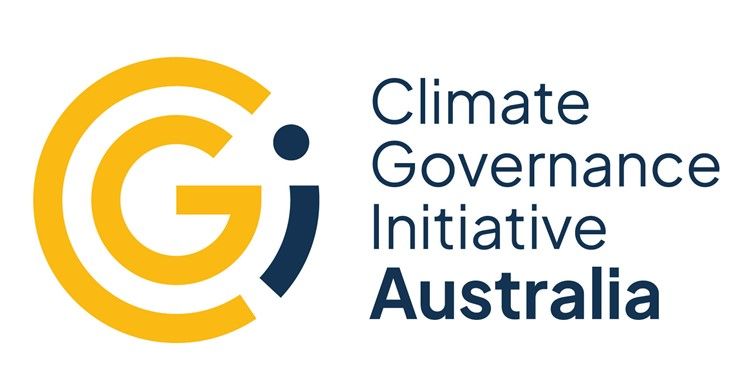In September 2022, Australia passed the Climate Change Act 2022 (CCA) setting in law the goal of reducing Australia’s net greenhouse gas emissions to 43% below 2005 levels by 2030 and achieving net zero by 2050.1 Pursuant to the CCA, the Australian Government is required to prepare an Annual Climate Change Statement. This statement will outline the Government’s policy commitment to mitigate effects of climate change and is required to be tabled before each House of Parliament. The CCA also expanded the role of the Climate Change Authority, an independent body established under the Climate Change Authority Act 2011 to provide expert advice to the Australian Government on climate change policy.
Australian regulators have taken concrete steps to address climate-related financial risks.
The Reserve Bank of Australia’s (RBA) Deputy Governor described the physical and transition risks associated with climate change as “likely to have first-order economic effects”.2 The RBA’s 2019 half-yearly Financial Stability Review devoted a section to climate change, and its October 2021 edition contained a focus on financial regulators’ actions on climate-related risks.3
The Australian Prudential Regulation Authority (APRA) has emphasised that climate risks should be managed like any other risk, in line with existing prudential risk management standards,4 as well as the Prudential Practice Guide CPG 229 Climate Change Financial Risks (CPG 229). 5 APRA and the RBA have announced that they will increase the incorporation of climate-related issues into their supervisory roles, including increasing the scrutiny of institutions' climate risk management and factoring this into ongoing stress tests.6 APRA has also carried out a climate vulnerability assessment of the five largest Australian banks, and has announced a voluntary assessment for other financial entities.7
In June 2023, the Australian Government updated its APRA Statement of Expectations, which now requires the regulator to promote prudent practices and transparency in relation to climate-related financial risks and adoption of climate reporting standards to entities under its remit.8
The securities regulator, the Australian Securities & Investments Commission (ASIC), has announced that climate-related financial risks are among its current supervisory and enforcement priorities.9
In recent years, ASIC has similarly characterised climate change as a “systemic risk that could have a material impact on the future financial position, performance or prospects of entities”.10 Then ASIC Commissioner Sean Hughes highlighted the regulatory priority of being “focused on the oversight of sustainability-related disclosure and governance practices of listed companies, managed funds, superannuation funds and green bonds”.11
In accordance with ASIC’s priority of taking action against greenwashing, ASIC has published Information Sheet 271 on greenwashing of sustainability-related funds and instruments.12 Since the publication of that Info Sheet, it has taken 35 regulatory interventions in relation to greenwashing, including issuing 11 penalty infringement notices, and filing its first court enforcement proceeding against a large retail superannuation fund.13
In response to ASIC’s regulatory scrutiny on greenwashing, ASIC has argued the policy of little or no ESG disclosures, sometimes referred to as ‘greenhushing’ has emerged as potentially another form of greenwashing.14
The Council of Financial Regulators has established a working group on the financial implications of climate change to help coordinate agencies' actions.15
In short, the position in Australia is clear: climate change is a financial risk that must be addressed by directors through governance and disclosure practices, subject to materiality.
Directors' Duties and Climate Change
Australia is a common law jurisdiction. In Australia, directors’ common law and equitable duties have been codified in the Corporations Act 2001 (Cth).16 However, the general law duties continue to apply concurrently.17 Directors must exercise their powers and discharge their duties in “good faith in the best interests of the corporation”, and for a “proper purpose”. The general duty of due care and diligence requires directors to “exercise their powers and discharge their duties with the degree of due care and diligence that a reasonable person would exercise” in the relevant circumstances. A legal opinion commissioned by the AICD has confirmed that directors have considerable latitude in discharging their best interests duty, and that environmental and stakeholder perspectives are legitimate considerations.18
In October 2016, Australian barrister Noel Hutley SC released a seminal legal opinion on directors’ statutory duty of care as it applies to climate change (the Hutley opinion). Hutley SC concluded that, as a matter of Australian law, “climate change risks would be regarded as foreseeable by courts, and relevant to a director’s duty of care to the extent that those risks intersect with the interests of the company”. Accordingly, Australian company directors certainly can, and in some cases should be considering the impact of climate change risks on their company – and those directors who fail to do so now could conceivably be found liable for breaching their duty of care in the future.19
In June 2018, then ASIC Commissioner John Price made public remarks foreshadowing that directorial liability could arise from a failure to consider risks related to climate change.20 In September 2018, ASIC recommended that:
directors and senior managers of listed companies need to understand and continually reassess existing and emerging risks that may be applicable to the company’s business, including climate risk.21
In March 2019, Hutley SC updated his 2016 legal opinion, concluding that there had been a demonstrable shift since 2016 in the way in which Australian regulators, firms and the public perceive climate risk which “elevate[d] the standard of care that will be expected of a reasonable director” in discharging their duty of care.22
In November 2019, former Australian High Court judge and financial services royal commissioner Kenneth Hayne stated that it is incumbent on company directors, in discharging their duty to act in the company’s best interests, to consider, address and report on climate-related risks:
[A] director acting in the best interests of the company must take account of, and the board must report publicly on, climate-related risks and issues relevant to the entity.23
In April 2021, Hutley SC published a further update to the 2016 legal opinion, stating that:
[i]t is no longer safe to assume that directors adequately discharge their duties simply by considering and disclosing climate-related trends and risks; in relevant sectors, directors of listed companies must also take reasonable steps to see that positive action is taken: to identify and manage risks, to design and implement strategies, to select and use appropriate standards, to make accurate assessments and disclosures, and to deliver on their company’s public commitments and targets.24
Counsel further opined that in relevant sectors, consideration of net-zero emissions targets are an “appropriate and necessary” step to discharge duties. In setting such targets, a company need not have all the answers about how the target will be achieved. However, an announcement of a net-zero target carries with it a representation that a company does have a genuine intention, formed on reasonable grounds at the time of making the commitment, to pursue strategies to achieve the target in good faith. Misalignment between that intention and operational strategy places the company, and its directors and officers, at risk of ‘greenwashing’, and potentially liable for misleading and deceptive conduct in relation to a ‘future matter’ under the Corporations Act, Australian Securities and Investments Commission Act 2001, and the Australian Consumer Law. This may, in turn, lead to ‘stepping stone’ liability for a breach of the directors’ duty of care. Indeed, Counsel’s view that “there is reason to think that ‘greenwashing’ claims of the kind outlined in this memorandum will become an acute source of risk”25 has played out, with a claim lodged in 2021 against an oil and gas company,26 and a 'books and records' claim (an application by a shareholder seeking access to documents, in this case those demonstrating the implementation of an environmental policy) against a bank.27
Directors' Disclosure Obligations and Climate Change
The securities regulator ASIC has recommended that listed companies disclose meaningful and useful climate risk-related information to investors, and strongly encouraged listed companies with material exposure to climate change to consider reporting voluntarily under the Task Force on Climate-related Financial Disclosure (TCFD) framework.28 The Australian Securities Exchange (ASX) Corporate Governance Council recommends that a listed entity should disclose (on a comply or explain basis) whether it has any material exposure to environmental risks and, in particular, climate-related risk, and if it does, how it manages or intends to manage those risks.29
In August 2019, ASIC revised its regulatory guidance to incorporate climate-related disclosures. RG228 now refers to the types of climate change risk described by the TCFD as key risks that may need to be disclosed in prospectuses.30RG47 highlights climate change as a “systemic risk” that could impact an entity’s financial prospects for future years and that may need to be disclosed in operating & financial reviews.31 ASIC included climate-related risks, including national climate commitments and relevant information under the TCFD recommendations as part of their recommended focus areas for 2022 reporting.32 In June 2022, it published specific guidance for financial institutions on sustainability-related labelling of products and services: Information Sheet 271 - How to avoid greenwashing when offering or promoting sustainability-related products.33 The ASIC’s Deputy Chair has explained how “the ASIC administers and where needed enforces a range of provisions in the Corporations Act that relate to disclosure by listed companies and product issuers” in relation to climate change-related disclosure and greenwashing.34
In April 2019, the Australian Accounting Standards Board (AASB) and Auditing and Assurance Standards Board (AUASB) updated their joint bulletin on integrating climate risk into accounting estimate assumptions and making climate risk disclosures in the financial statements, squarely bringing climate risk within the scope of external audit and the audit committee role.35 These developments are relevant to the obligation on Australian directors to give a declaration that the financial statements and notes comply with the accounting standards and give a 'true and fair view' of position and performance.36 In December 2021, the AASB and AUASB published a joint paper on the IFRS Foundation’s International Sustainability Standards Board (ISSB), stating that they would maintain close links with the ISSB in the development of the ISSB framework and standards.37 The AASB has since confirmed that it will use the ISSB standards as the baseline for the development of Australian sustainability reporting standards with modifications for Australian-specific matters and requirements, which may come to be the subject of regulation in the same manner as the Australian Accounting Standards.38
In December 2022, the Australian Treasury launched a consultation on climate-related disclosures, stating that “the Government will introduce standardised, internationally-aligned reporting requirements for businesses to make disclosures regarding governance, strategy, risk management, targets and metrics – including greenhouse gases”.39 Treasury's position is widely interpreted as not an 'if, but 'when' and 'how' the ISSB standards will be applied in Australia (with appropriate jurisdictional allowances).
On 26 June 2023, the ISSB issued its finalised sustainability and climate standard, IFRS S1 (general sustainability disclosure standard) and S2 (climate disclosure standard).40 IFRS S1 is a foundational standard that defines key concepts that apply across all subsequent topical disclosure standards (such as S2), including materiality, fair presentation, connecting information, sources of guidance, location and timing of disclosures and comparative information. The climate standard, IFRS S2, builds on the TCFD including the four topics of governance, strategy, risk management and metrics and targets, but requires more detailed and granular disclosures. Such disclosures include the current and future financial impact of climate change risks and opportunities on the business, its cash flows and access to capital, and the current and anticipated actions taken to manage these risks (including through the setting of transition plans and climate targets).
On 27 June 2023, the Australian Treasury issued a second consultation on climate-related disclosures which set out the Government’s proposed design for a climate disclosure framework.41It is proposed that the content of the mandatory climate disclosures in Australia is based on the IFRS S2, as adapted to the Australian market by the AASB, with organisations required to disclose initially on governance, identification and management of climate risks and opportunities, transition plans, qualitative scenario analysis and scope 1 and 2 emissions. The Government proposes a three-tiered staggered approach to implementation, starting with certain large entities42 and controlling companies reporting under the National Greenhouse and Energy Reporting Scheme (NGERS) regime who meet the publication threshold from the 2024/25 reporting period, and descending by size.
From an enforcement and liability perspective, the Government proposes to introduce civil penalty provisions into the Corporations Act, such that a failure to disclose, or inadequate disclosure, would attract a civil penalty. As a transitional measure, the Government also proposes that enforcement for misleading or deceptive conduct or “similar claims” in respect of scope 3 emission disclosures or select forward-looking disclosures (being scenario analysis and transition planning) will be limited to regulator-only actions for a period of three years from the reporting period commencing 1 July 2024.
Biodiversity Risk Australia is considered one of the 17 most mega-biodiverse countries, hosting between 7 and 10% of all species on Earth.43The CCLI has published a report on how companies in Australia and other jurisdictions may depend on biodiversity for the functioning of their business models.44Biodiversity risks may constitute material financial risks which boards are required to consider within the purview of directors’ duties. The degree of consideration required will be proportionate to the magnitude of the relevant biodiversity risks to the company. In March 2023, the Australian Government has introduced legislation into Parliament for a biodiversity certificate trading scheme for land and marine conservation and regeneration projects; signalling natural capital as an emerging asset class (see the Nature Repair Market Bill (2023)). The scheme is broadly based on the regulatory architecture already in place for carbon credits in Australia, with a range of adaptions and enhancements to address the unique attributes associated with creating a market relating to nature protection, repair and restoration. The Australian Government is signatory to the Kunming-Montreal Global Biodiversity Framework, as well as a number of international initiatives aligned with the proposed action-oriented targets under that Framework. This includes an October 2022 commitment to the High Ambition Coalition on Nature and People which (like the Global Biodiversity Framework) includes targets including to ensure 30% of degraded lands are under restoration, and 30% of terrestrial and marine ecosystems protected, by 2030 (amongst other targets on extinction, invasive species and pollution). These commitments supplement the Australian Federal Government's Threatened Species Action Plan 2022-2032 (released in October 2022) which maps a pathway to protect, manage and restore Australia's threatened species and important natural places. It includes an objective to prevent new extinctions, and a commitment to protect and conserve more than 30% of Australia's land mass. Combined with Australian Government funding of the Task Force on Nature-related Financial Disclosures (TNFD) and Australian Sustainable Finance Initiative (ASFI) work as part of the TNFD Forum,45 this may indicate that Australia will be one of the first movers in adopting the TNFD recommendations into law. The TNFD is a voluntary market-led, science-based and government supported initiative that provides a structured framework for companies to report their interactions with nature. Whether directly or indirectly, all businesses rely on, and interact with, nature at some point in their value chain, therefore the TNFD is likely to influence boardroom decisions across all sectors regarding not only reporting, but also strategic planning and risk management. In Australia, banks are increasingly responding to stakeholder expectations to report on biodiversity and nature-related risk.46 As of August 2022, a potential claim had been indicated against an Australian bank on the grounds that it has a legal obligation to disclose and manage biodiversity related risks.47 This may indicate that directors would be well-advised to consider biodiversity risks to the extent they foreseeably impact on the interests of the company in order to then diligently consider whether those risks are material – and from there exercise a proportionate degree of consideration if the impact on corporate strategy, risk oversight and disclosure responsibilities. |
Practical Implications for Directors
The steps required to discharge duties to govern and disclose climate risk depend on the unique circumstances of the company and governance situation.48However, given that Australia’s financial regulators have become increasingly emphatic regarding the need for companies and their directors to adopt climate risk and resilience measures, well-counselled boards will, taking into account the unique circumstances facing each company:49
- maintain systems so that the board and management have the skills and education to remain abreast of material developments in this dynamic area, including access to expert advice where necessary;
- oversee management's climate risk identification and evaluation, with clear management accountabilities and reporting lines back to the board. This should include monitoring of the integration of climate change within risk management frameworks;
- consider the implications of the transition to net zero for their company, including whether the business should adopt a net zero strategy (including clear interim targets) (and if so, that should be aligned with the Paris Agreement);
- where emissions reduction targets have been set, ensure that the company has credible transition plans in place to achieve those goals;
- where board sub-committees are used, delegate to the appropriate committee(s) of the board, such as risk, audit, legal and governance, scenarios/strategy, nominations/remuneration, or sustainability/corporate responsibility, the task of translating the long-term strategy into a clear decision-making process for each aspect that is relevant to each committee; and
- examine reporting and disclosure frameworks and guidance so that disclosures are meeting regulatory (and where relevant investor) expectations and oversee a communication and engagement plan so that there is accountability to stakeholders.
Contributors:
- Sarah Barker, MinterEllison
- Ellie Mulholland, CCLI, MinterEllison
- CCLI
 |  |  |
